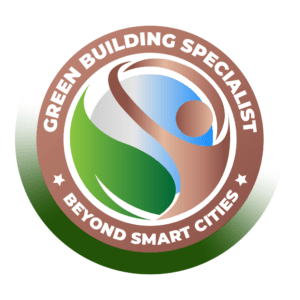LEED Implementation Guide for Design Professionals 
The LEED Implementation Guide for Design Professionals training course is recognised across industry for providing sustainability or green building professionals with a holistic “big picture” view of energy management for commercial buildings and facilities.
This online course will review the technical requirements of the LEED v4 Building Design and Construction rating systems. The series will cover each credit category, touch on every prerequisite and credit, and highlight differences specific to project-type adaptations.
Beyond Smart Cities is encouraging high performance and high quality built infrastructure that aligns with established regulatory green building requirements and encourages accountability through exemplary LEED ratings. This commitment is a part of Beyond Smart Cities’ larger effort to realise the vision it has laid out for the future.
This guide’s purpose is to provide direction and clarification for the implementation of the BD+C v4 grading systems for upcoming new LEED building projects. This is the guide’s mission. This guide defines performance criteria within the LEED rating system to allow a streamlined and coordinated LEED process, supporting excellent project certification ratings. The purpose of this guide is to facilitate a streamlined and coordinated LEED process.
Hear from LEED v4 experts as they share valuable technical information and personal experiences to demonstrate how credits have been achieved on real LEED projects. In each session, you will also gain essential knowledge for successful implementation of the rating systems by learning credit intents, key concepts, requirements, strategies, referenced standards, and synergies within all credit categories. Synergies and differences for the Interior Design and Construction Rating Systems will also be addressed.
Krishnaji Pawar, a Sustainability Specialist, created the LEED Implementation Guide for Design Professionals—Sustainability Specialist Course.
specialises in developing sustainable design strategies for Green Building Certification Systems (LEED, GSAS, etc.), Energy Management, Energy Efficiency, Energy Audits, Building Commissioning, Environmental Impact Assessments, and Environmental Management Systems.
LEED, which stands for the Leadership in Energy and Environmental Design, is a system that certifies green buildings after they have been designed, constructed, and certified. The United States Green Building Council was the organisation that developed it. The purpose of this training programme is to provide design practitioners with a LEED implementation guide that will aid them in the process of obtaining certification.
The LEED Implementation Guide for Design Professionals was primarily formulated through the input, suggestions, and recommendations received from LEED accredited professionals. These LEED accredited professionals include architects, engineers, commissioning authorities, general contractors, construction managers, and facility managers.
Four questionnaire surveys were utilised to collect data. It took two of them to create the guide, while the other two were employed to make adjustments and test the guide while it was being created. When it comes to managing the LEED certification process, general contractors, construction managers, and engineers can use the LEED implementation guide as a reference. The proposed guide can also be of use to owners who want to construct a building that is certified by the LEED system during the planning phase of a project.
The following are some insights into the course content:
- Determine LEED v4 credit intent, requirements, and success strategies for building design and construction rating systems.
- Learn about LEED design and construction.
- Integrative Process—Charrettes and Team Workshops: Instruments for Project Integration
- LEED project feasibility and economic analyses.
- Understand LEED criteria and credit categories from a design perspective, along with strategies for location and mobility, sustainable sites, water efficiency, energy and atmosphere, materials and resources, indoor environmental quality, innovation, and regional focus.
- Consider LEED documentation requirements.
- Credit requirements improve buildings and market transformation.
Beyond smart cities aspires to demonstrate leading green building design and is committed to accountability in building performance.


